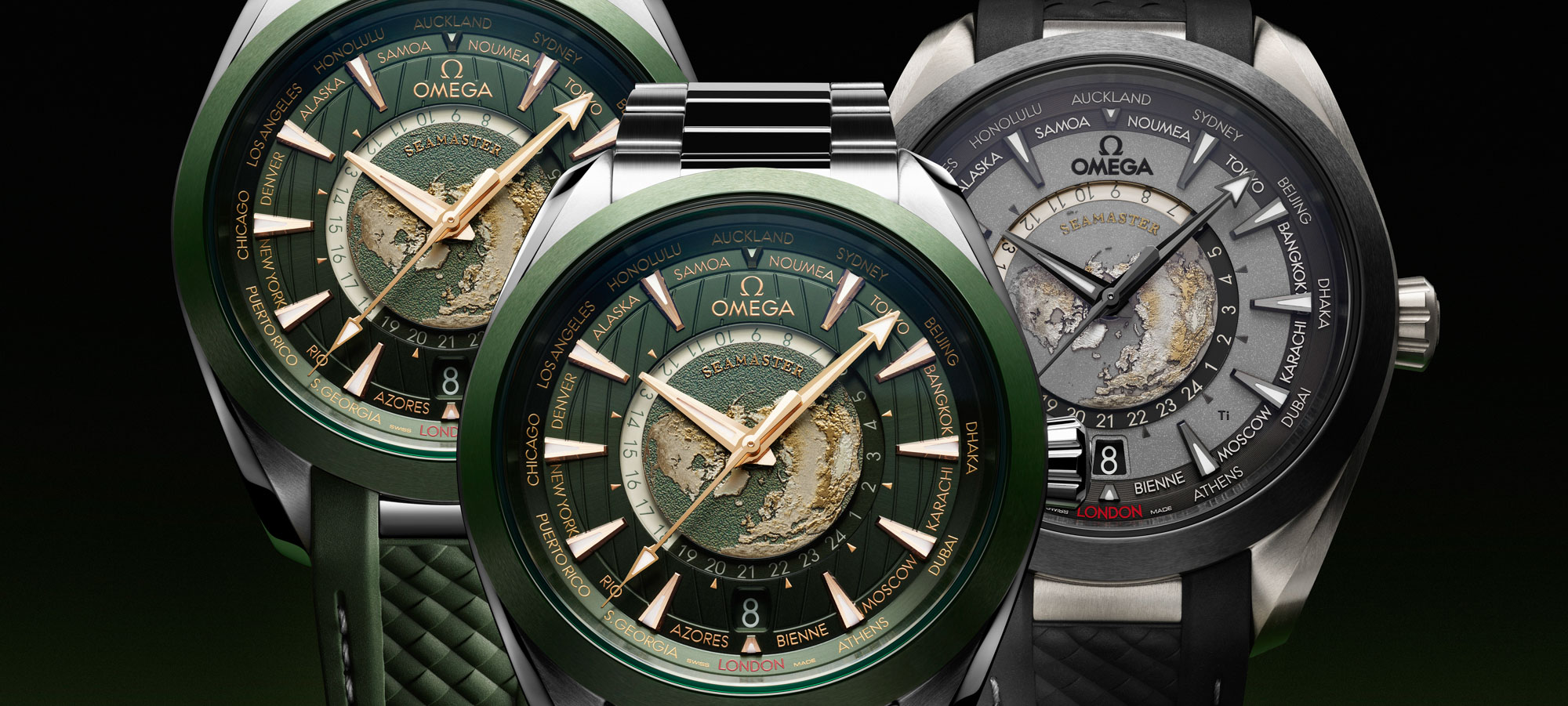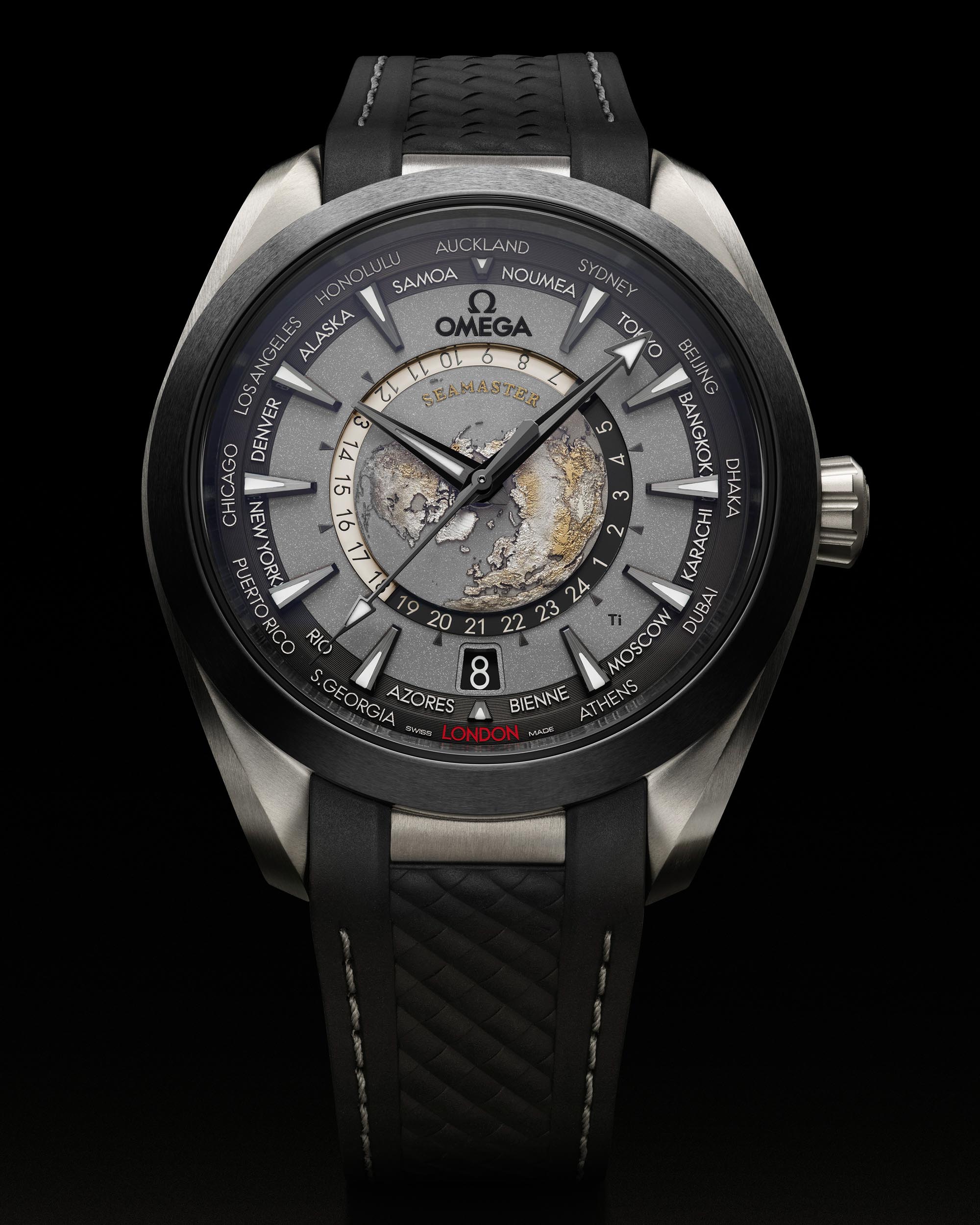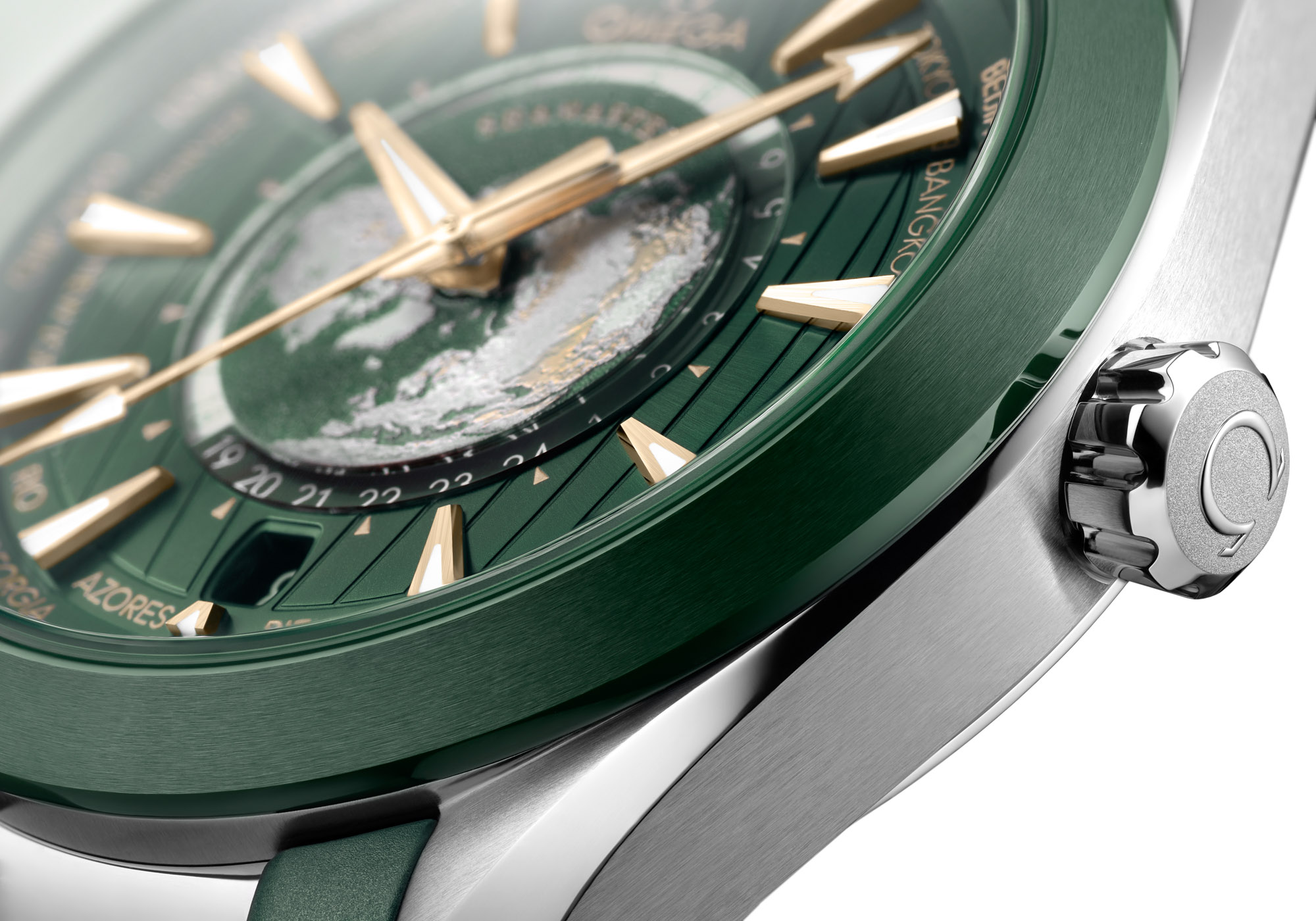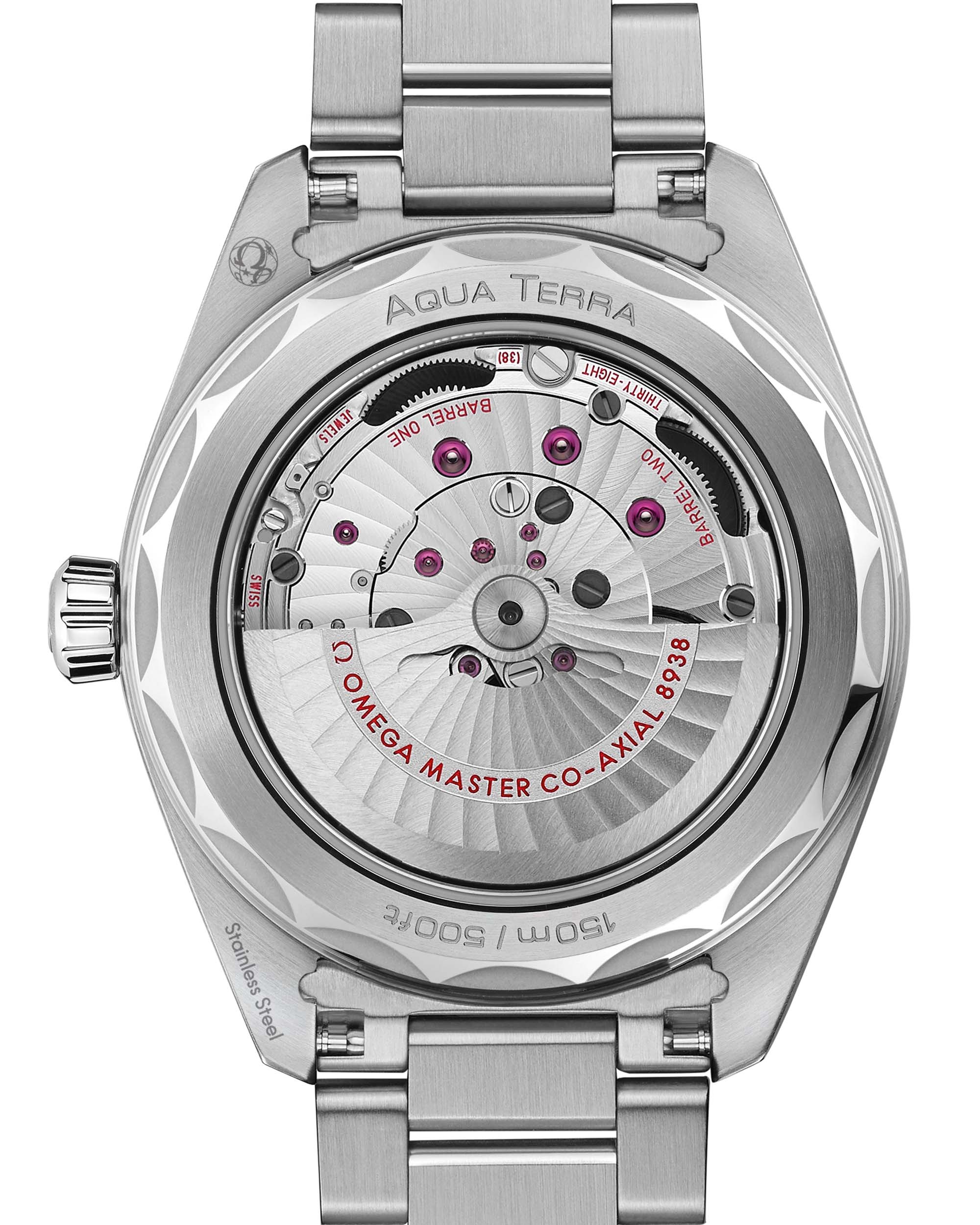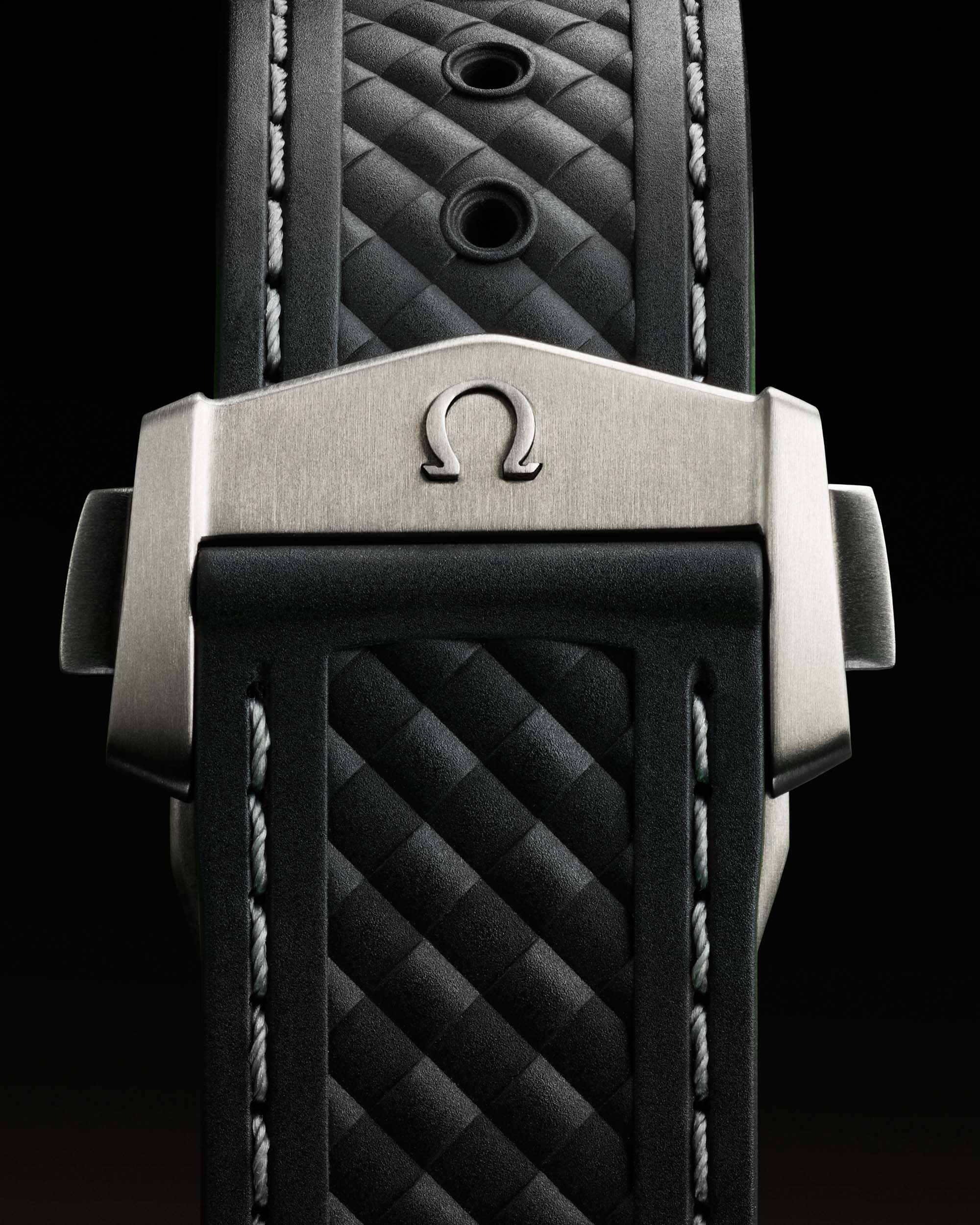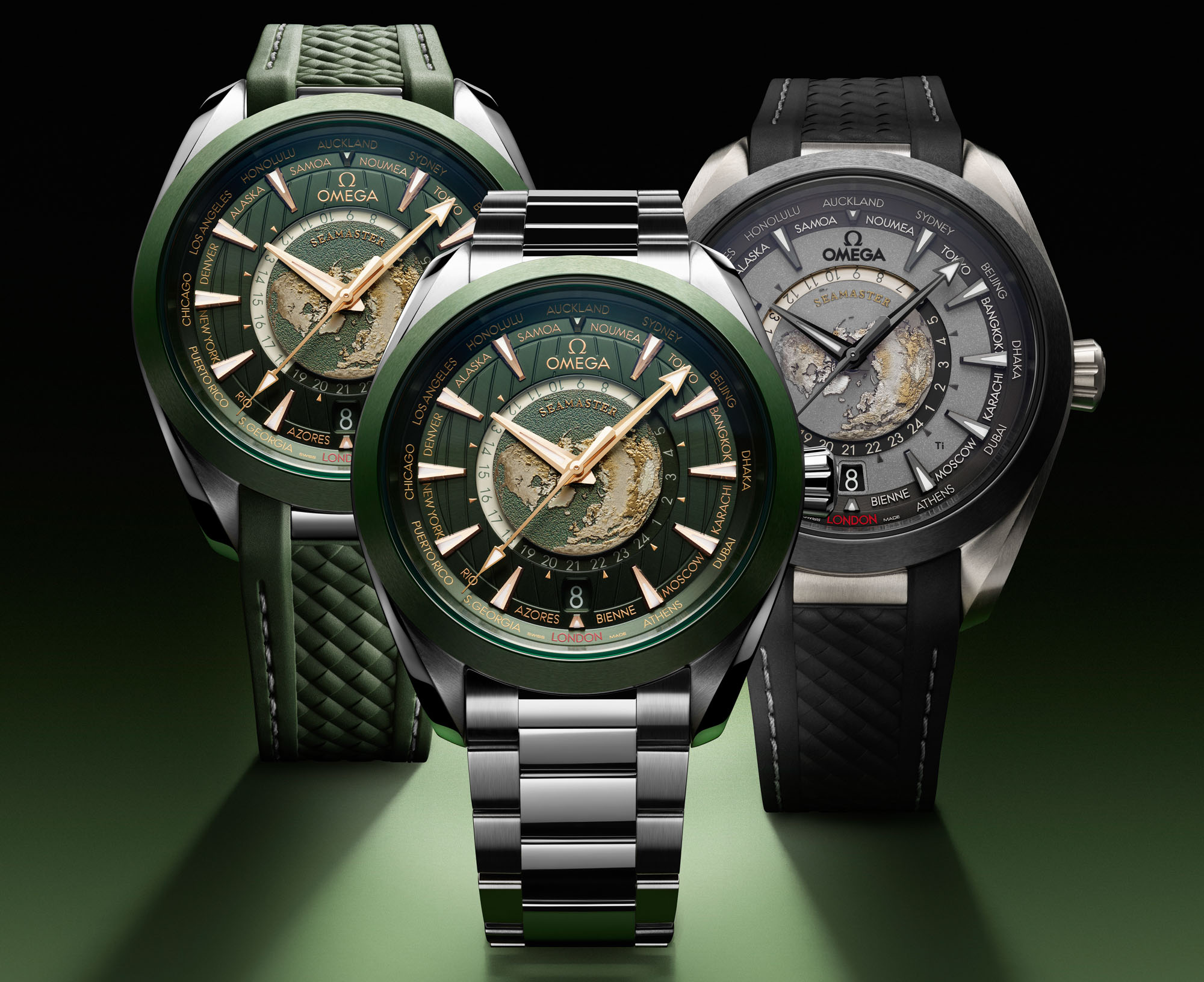
As part of an unexpected surprise launch from the brand, the Omega Seamaster Aqua Terra Worldtimer watch collection receives three new references: in stainless steel in green on a stainless steel bracelet or cool and intricate rubber strap, and in grade 2 titanium, available exclusively on rubber. There are some delicate details to the new Omega Aqua Terra Worldtimer, so let’s take a closer look.
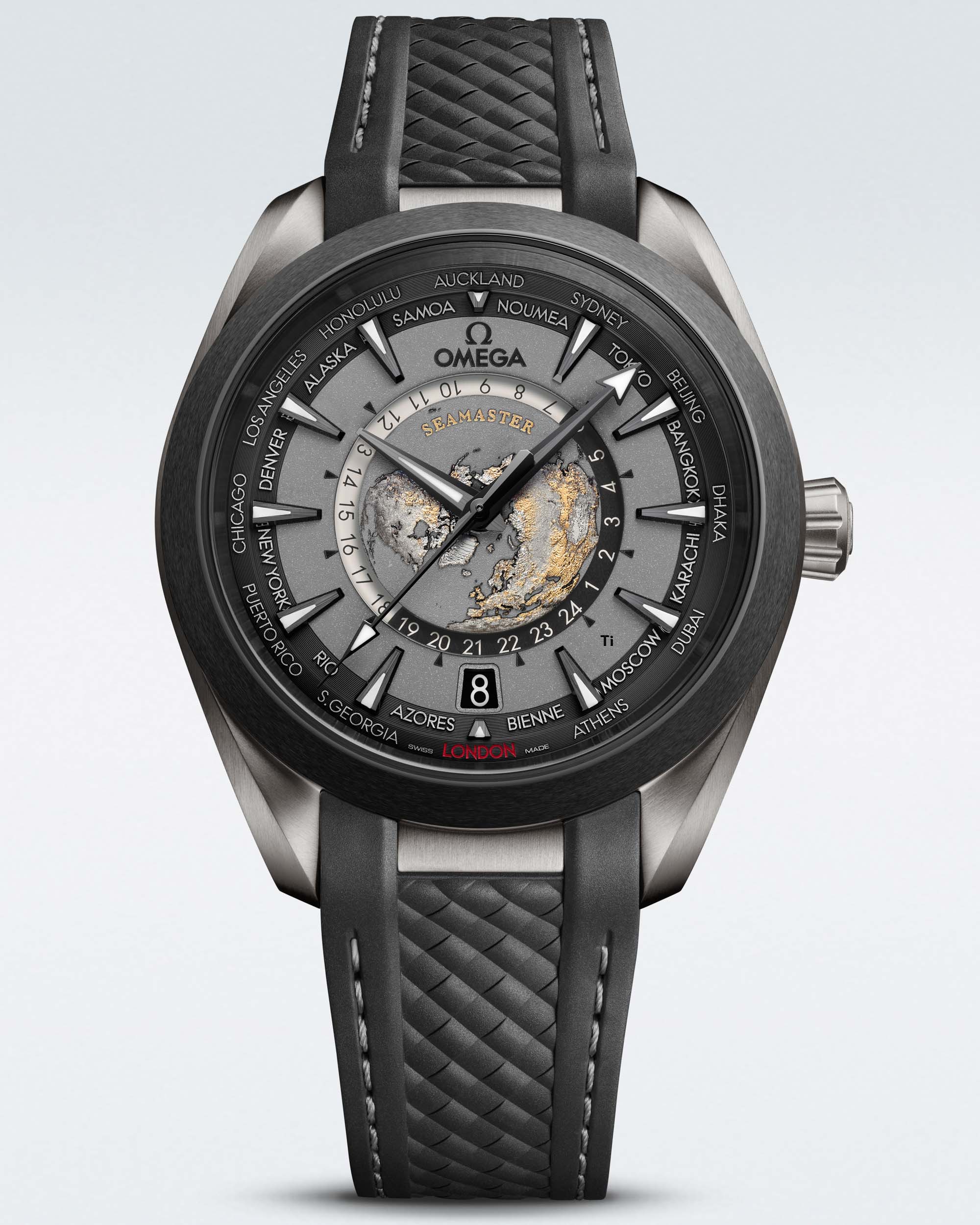
The Aqua Terra World Timer has come a long way since it debuted at BaselWorld in 2017 in platinum. It’s worth taking a look at that piece and comparing it to these 2023 novelties. The changes in dial proportions, case colorization, and materials are substantial. Some six years of evolution show just how difficult it is — not just for Omega, but for everyone — to get world timer dials and watches, as a whole, just right. There is a broad range of information included in a world timer, and all of it has to be readily available. Most watches have the luxury of complications that are flexible in how they are displayed and how much real estate they take up on the dial. Even a perpetual calendar can be hidden in novel ways, so long as the date is clearly indicated. By contrast, the very essence of a world timer is that it displays time simultaneously in every part of the world (with a visual representation of at least one hemisphere). Our first look at the 2023 Omega Seamaster Aqua Terra Worldtimer is telling us that Omega seems to have cracked the world timer code with this one.
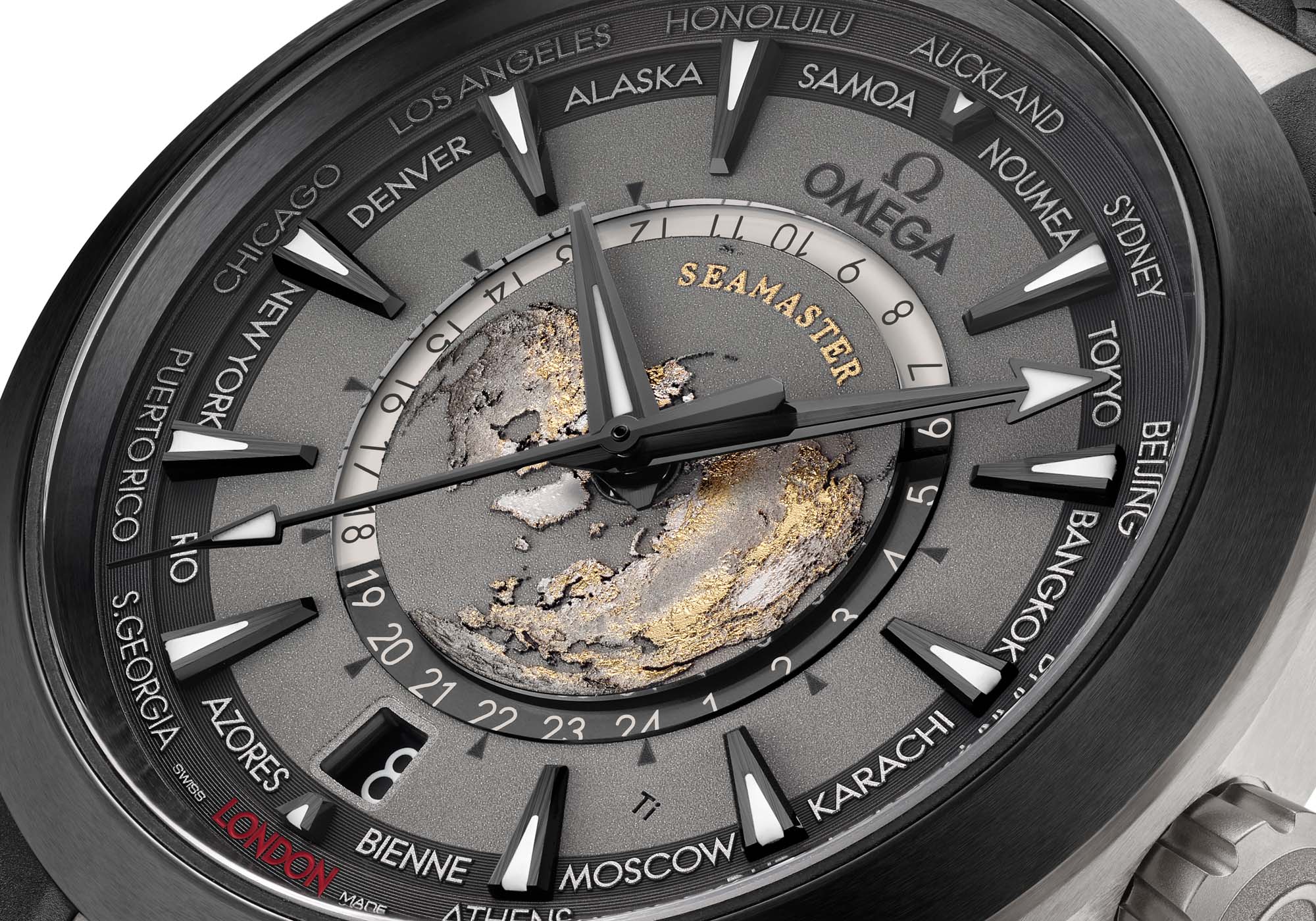
The dial plays a major role in that, especially on the gray-scale titanium-clad version (reference 220.92.43.22.99.001) that somehow operates better with darker and brighter areas to separate different sections. At the center of all three new Omega Seamaster Aqua Terra Worldtimer models lies a miniature representation of the Northern Hemisphere, achieved through laser ablation. Simply put, it’s a laser-etched metal surface that uses a combination of heat and precision not only to create the intricate geographical elements and an ever-so-slightly domed surface to mimic the curvature of the earth, but also to add color.
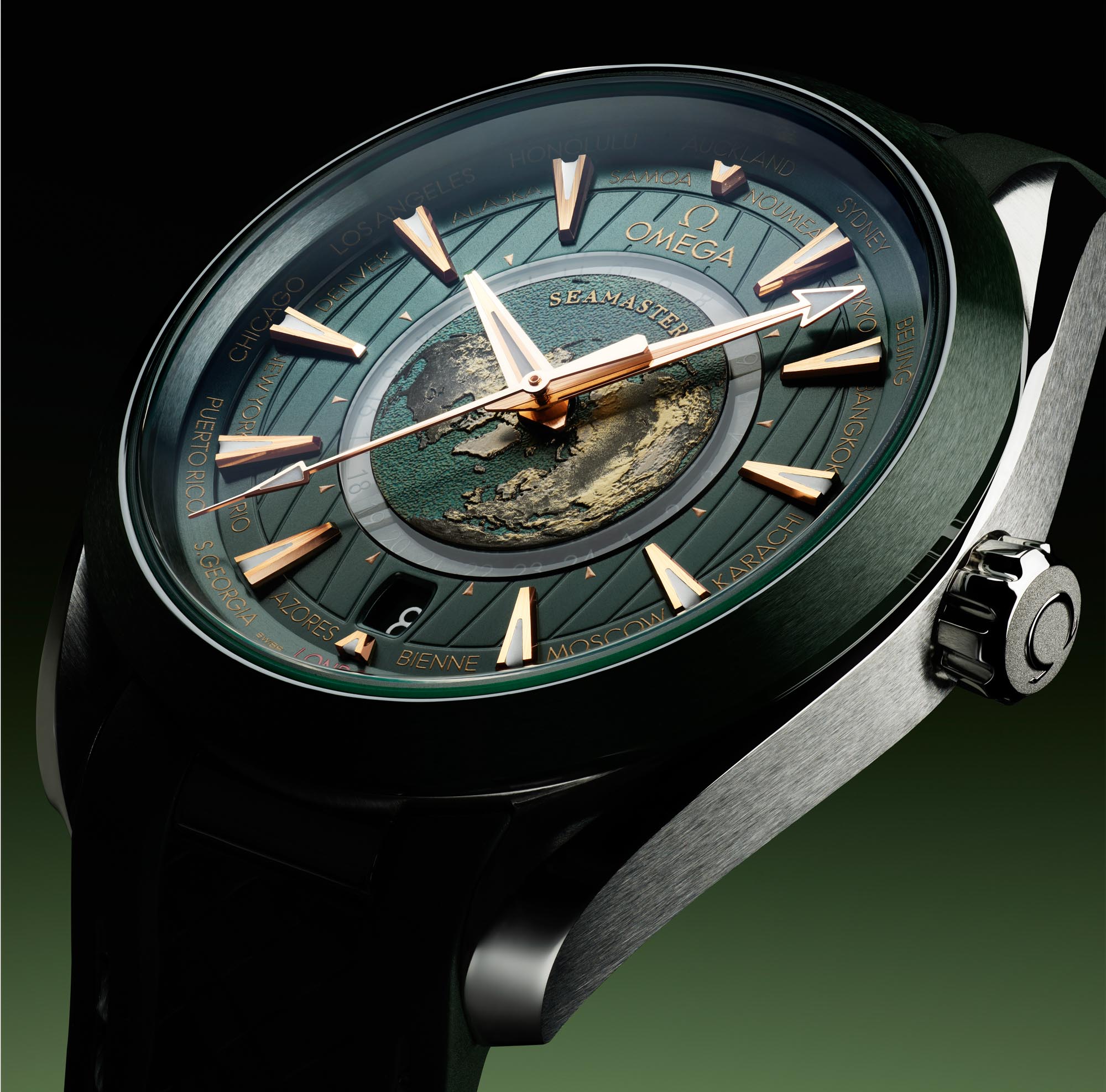
“Heat-blued” steel and titanium have been a fixture in watchmaking for centuries, but it is perhaps a lesser-known fact that throughout that process, the metal takes on various hues before and after that spectacular blue hue is reached. With titanium, a yellowish-golden color can be achieved, and with precise laser impulses, delicate graduations also appear to be possible. On the green versions, the green color is attained with a PVD coating.
 Omega refers to its Seamaster Aqua Terra Worldtimer as the watch “made to track every time zone on the planet,” which is a bit of a stretch — Swatch Group sister-brand Glashütte Original is the one that has developed and produces a (much more complicated) watch for that purpose, the Senator Cosmopolite. Still, 24 time zones is plenty and helps Omega stay true to the beauty of the original world timer display conceived by Louis Cottier in 1931. (It was Cottier’s design that Patek Philippe and many others have embraced and made famous throughout the 20th century and that many find so attractive to date.)
Omega refers to its Seamaster Aqua Terra Worldtimer as the watch “made to track every time zone on the planet,” which is a bit of a stretch — Swatch Group sister-brand Glashütte Original is the one that has developed and produces a (much more complicated) watch for that purpose, the Senator Cosmopolite. Still, 24 time zones is plenty and helps Omega stay true to the beauty of the original world timer display conceived by Louis Cottier in 1931. (It was Cottier’s design that Patek Philippe and many others have embraced and made famous throughout the 20th century and that many find so attractive to date.)

The Aqua Terra Worldtimer is a beefy watch at 43mm-wide, 50.3mm lug-to-lug, and 14.1mm-thick — the grade 2 titanium option on the rubber strap will have the least, and the all-steel version on the bracelet, the most heft of the bunch. Water resistance remains an impressive 150m enforced by a screw-down crown, and all watches and movements are tested to withstand magnetic fields as powerful as 15,000 Gauss as part of the METAS-certified Master Chronometer quality control. On all three versions, there is a display caseback in sapphire, but there doesn’t seem to be a quick-release strap system — a convenient little feature that’s on more and more luxury watches these days.
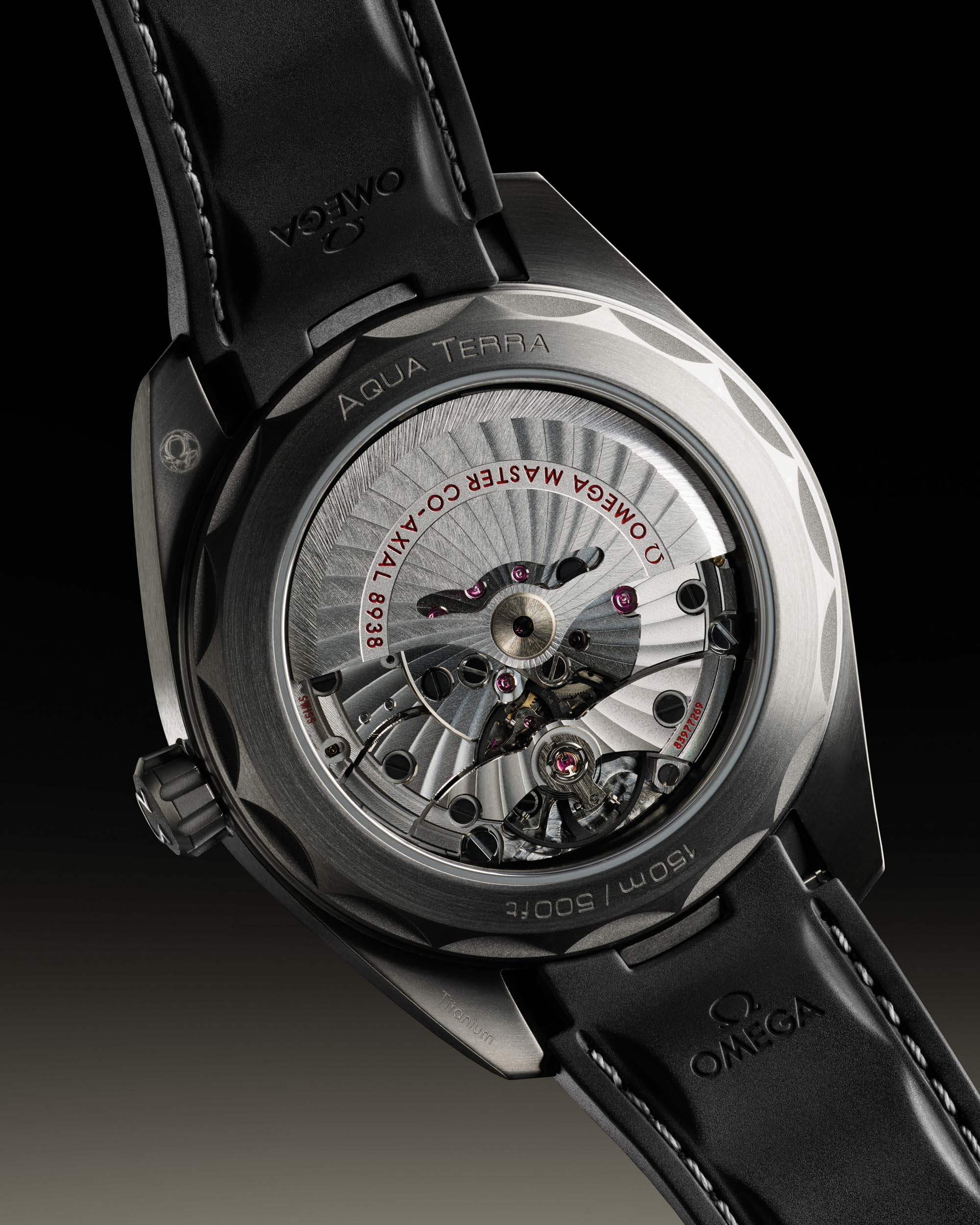
Inside all of them beats the Omega 8938 caliber, a 60-hour power reserve co-axial movement that beats at 25,200vph. That’s slightly lower than the modern industry-standard 4Hz (28,800 bph), and it is true that many brands offer three or even five full days of power reserve with the latest creations. On the plus side, the Master Chronometer certification ensures that a highly impressive average accuracy of 0/+5 is achieved by every Omega Seamaster Aqua Terra Worldtimer, and you should be able to check the chronometry performance reports of your specific watch on the Omega website. The movement is rather lavishly decorated, with swirling stripes across the larger plates and the self-winding rotor, and with one’s daily dose of boasting technical specifications and such spelled out in red.
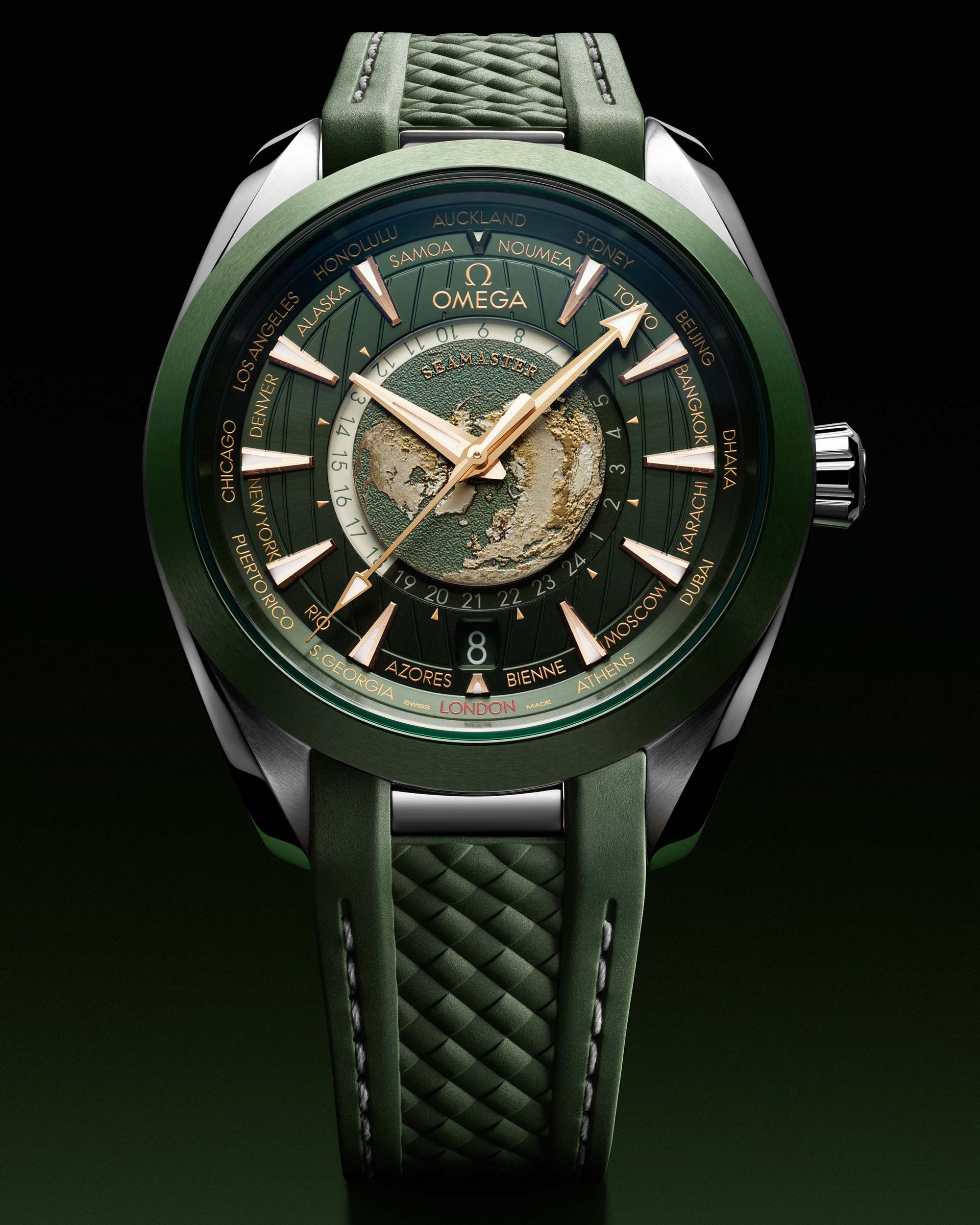
The bezel is in virtually scratch-proof ceramic in either green or black with a brushed top and polished side on all versions. Something we look forward to checking out on the wrist soon is how the ceramic bezel works aesthetically with the various case materials (steel and titanium) and dial colors. Accurately coordinating specific hues between different components such as the green between the bezel and the dial is a real challenge in every price segment, and it’s only in the metal and not from official images that the results can be judged.
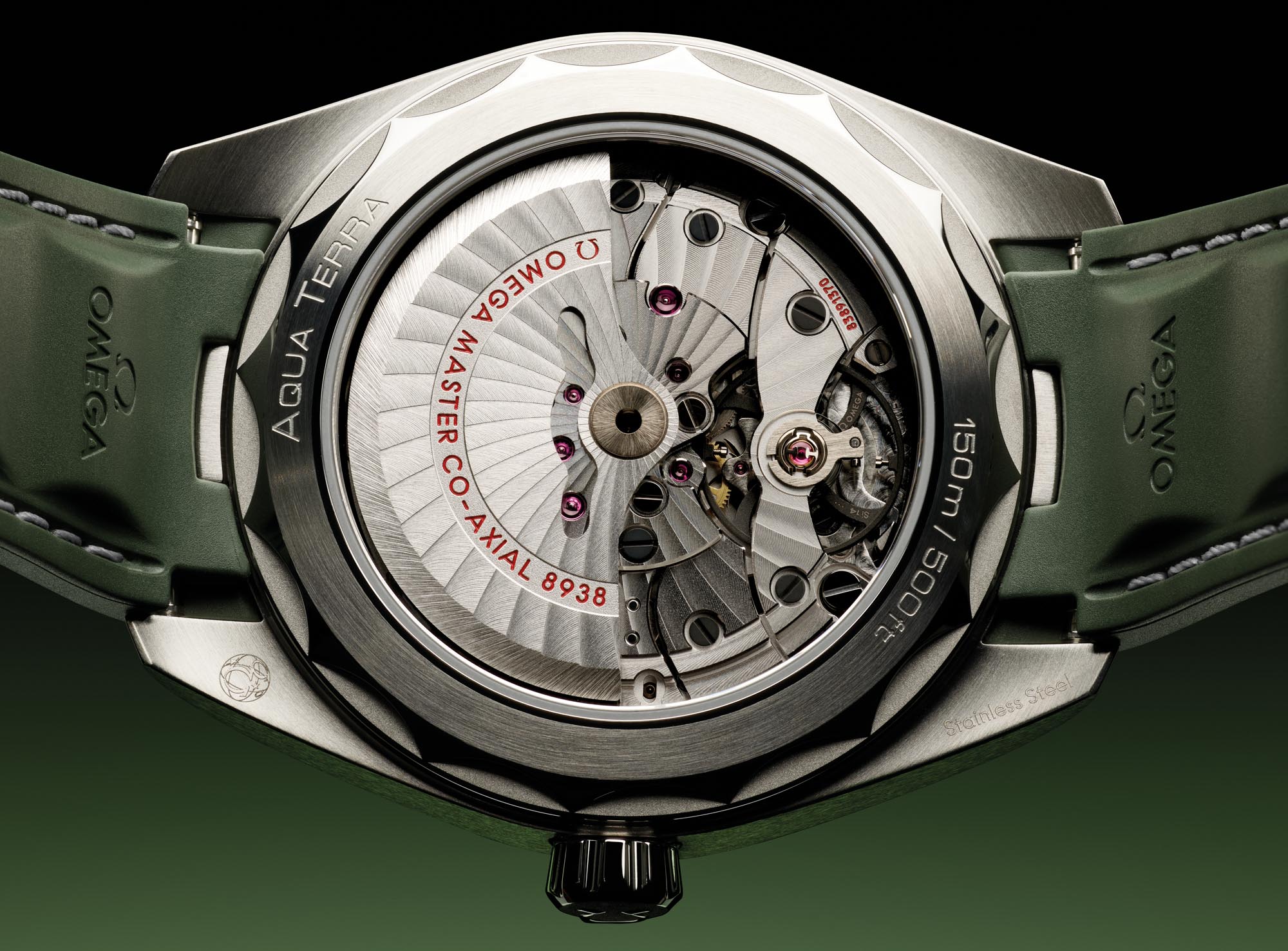
The green Omega Seamaster Aqua Terra Worldtimer on the bracelet (ref. 220.30.43.22.00.01) is priced at 9,600 CHF and 9,400 CHF on the rubber strap (ref. 220.32.43.22.10.001), while the titanium version on the black rubber strap (ref. 220.92.43.22.99.001) is priced at 10,900 CHF. You can learn more at the brand’s website.

